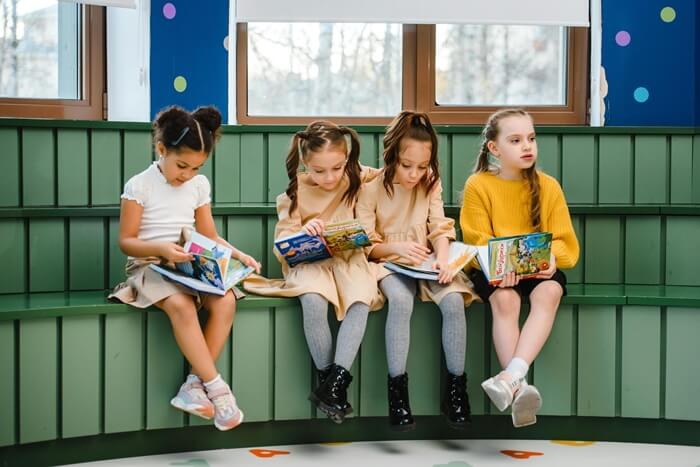Education is evolving rapidly, and understanding different learning styles is crucial for creating inclusive and effective teaching methodologies. Learning styles refer to the varied ways in which individuals absorb, process, and retain information. By identifying and catering to these styles, educators can employ differentiated instruction and personalized learning strategies to enhance academic outcomes. Learning styles...
BlogDifferent Learning Styles in Education: A Comprehensive Guide

Education is evolving rapidly, and understanding different learning styles is crucial for creating inclusive and effective teaching methodologies. Learning styles refer to the varied ways in which individuals absorb, process, and retain information. By identifying and catering to these styles, educators can employ differentiated instruction and personalized learning strategies to enhance academic outcomes.
Learning styles are broadly categorized into visual, auditory, and kinesthetic, with some individuals preferring a multimodal approach. Each style reflects unique preferences in the way learners engage with information.
| Learning Style | Key Characteristics | Effective Techniques |
| Visual Learners | Prefer images, diagrams, and written instructions | Charts, infographics, concept maps, and visually rich presentations |
| Auditory Learners | Learn best through listening to explanations and discussions | Audio recordings, discussions, lectures, and storytelling |
| Kinesthetic Learners | Thrive on hands-on activities and physical engagement | Experiments, role-playing, crafting, and interactive simulations |
| Multimodal Learners | Use a combination of visual, auditory, and kinesthetic approaches | Flexible methods incorporating visuals, discussions, and tactile activities |
Visual Learners
Visual learners process information more effectively when it is presented in graphical formats. They excel in activities involving maps, charts, and images. Educators can support these learners by incorporating vibrant slideshows, diagrams, and whiteboard illustrations. Tools like mind maps and color-coded notes also improve retention for these students.
Auditory Learners
Auditory learners excel when learning involves sound. They prefer verbal instructions and benefit greatly from group discussions and oral presentations. Using podcasts, audio lectures, or musical mnemonics can help these learners retain information. Teachers should also encourage them to read aloud or engage in debates to reinforce their understanding.
Kinesthetic Learners
Kinesthetic learners are action-oriented, absorbing information through hands-on experiences. These students thrive in activities like science experiments, drama, or sports-based learning. Incorporating active learning techniques such as role-playing, DIY projects, or outdoor lessons can engage their interest and improve their comprehension.
Multimodal Learners
Multimodal learners combine preferences from multiple learning styles, making them adaptable to various teaching methods. They might switch between styles depending on the context. For these learners, a blend of activities—like presenting content visually, followed by group discussions and hands-on tasks—ensures they grasp concepts holistically.
Differentiated Instruction and Personalized Learning Strategies
To accommodate diverse learning styles, educators can employ differentiated instruction. This involves tailoring teaching methods, materials, and activities to suit individual preferences. Personalized learning strategies take this a step further by aligning lessons with each student’s specific needs and strengths. Here are some approaches:
- Flexible Classrooms: Creating learning stations that cater to different styles.
- Technology Integration: Using multimedia tools for interactive learning.
- Student-Centered Projects: Allowing students to choose project formats based on their learning preferences.
- Assessment Variety: Offering diverse evaluation methods like written tests, oral presentations, or practical demonstrations.
| Approach | Benefits |
| Flexible Classrooms | Encourages independent learning and adaptability |
| Technology Integration | Enhances engagement with interactive and multimedia tools |
| Student-Centered Projects | Promotes creativity and ownership of learning |
| Assessment Variety | Provides a fair measure of individual capabilities |
Active Learning Techniques
Active learning fosters critical thinking and collaboration among students. Techniques such as peer teaching, group problem-solving, and flipped classrooms ensure students remain engaged and apply their knowledge practically. These strategies not only improve academic performance but also build essential life skills.
Challenges in Addressing Learning Styles
While accommodating learning styles offers numerous benefits, it poses challenges like increased planning time for teachers and resource constraints in schools. However, the long-term advantages—enhanced student engagement and better outcomes—make it a worthwhile investment.
Understanding and integrating different learning styles in education are key to fostering an inclusive learning environment. By adopting differentiated instruction, personalized learning strategies, and active learning techniques, educators can ensure every student thrives, regardless of their learning preferences. Acknowledging these styles not only enhances academic success but also prepares students for lifelong learning.